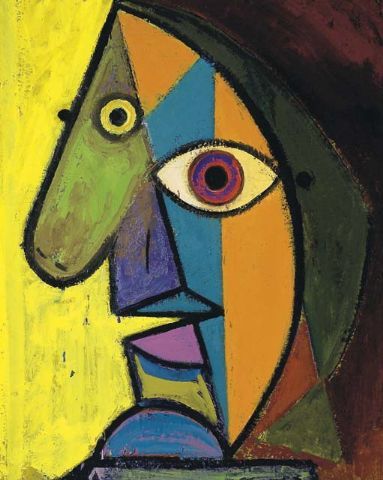One thing that’s always been a challenge to me is drawing faces, and especially…the dreaded profile!
While not altogether needed in most live graphic recording work since I’m focusing on capturing the content high-speed so you can see what you’re talking about, sometimes I find myself wanting to draw a cool perspective, or have a bit more time to do some detail work, and don’t want my cool illustration of your ideas to end up looking like this:
Work by Picasso. Just in case you thought it was mine.
Wait…that’s actually pretty nice…
Anyway, you get the point.
So, I did some research and found this handy little trick to help with where to put all those little features that make up our faces…like eyes and noses.
This is just a beginning guide. Get creative! Experiment with different shapes of noses. What happens if you change the eyebrow ridge above the eyes? What can you do to make it look more male or female? Younger or older? How can you add emotions? Have fun and play with it!
Once again, thank you from my heart and soul for your support, great senses of humor, brilliant minds, collaboration and what you're each doing to make the world a better place.
Cheers, Karina
You've got the team, I've got the markers. Let's talk about your next event that could use a touch of visual storytelling.
Where in the World is ConverSketch?
Currently: Near Baltimore, Maryland capturing a training on management and communication for the NSA. So yeah, I can't say much about it at this point... Other than it's always a good day when you figure out how to work in the Lion King.
Also:
The CSU Center for Public Deliberation is one of the gems that makes Fort Collins unique. I’m fortunate to be a graduate of the student training and continue to be involved as a Community Associate and help out facilitating or graphic recording for various dialogue and deliberative processes they facilitate. Earlier this month they put on a session called Beyond Partisan Politics: The Power of Authentic Engagement. During this session we learned the neuroscience behind why it’s so easy to get trapped in the downward spiral of False Polarization, and tips on how to have a productive conversation, even if you don’t agree with someone. Here’s the graphic recording chart from the evening.






